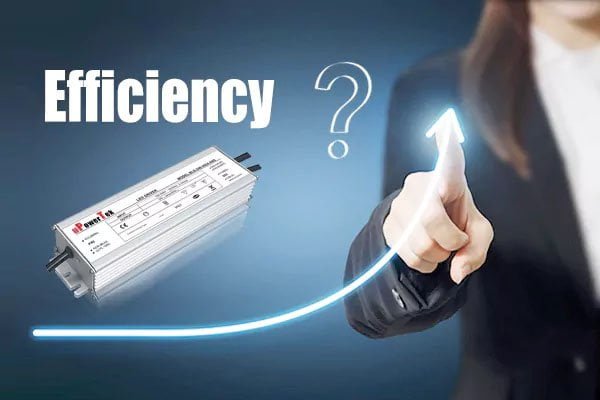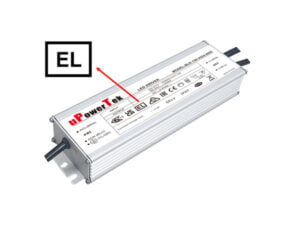Light Emitting Diodes (LED) have gained prominence in the world of lighting. Its tremendous rise to the helm of lighting affairs due to its efficiency has seen it beat the competition from traditional lighting systems. The outstanding feat of LED drivers triggers curiosity, and people are asking the question, “what is LED Driver Efficiency?”
The efficiency of the Light Emitting Diode (LED) driver is the ratio of energy emitted by the driver to the power it consumes from the electric line.
Let’s express our definition in a simple formula;
LED Driver Efficiency = 
The standard expression for efficiency is in percent. So now you see why experts make statements like “The LED driver has an efficiency of 90%.”
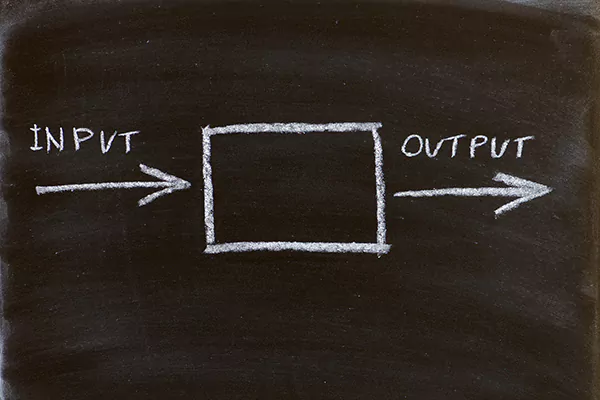
What Is Input Power?
Do you know that lighting works on the principle of receiving and giving? Not to worry, I’ll explain. Your electric bulb will only light up the room after receiving power from the electric supply. Please note that the electric supply we are talking about could be as little as your wall sockets.
Input power is the amount of energy that gets into a device or system. In this case, the device or system is the LED driver.
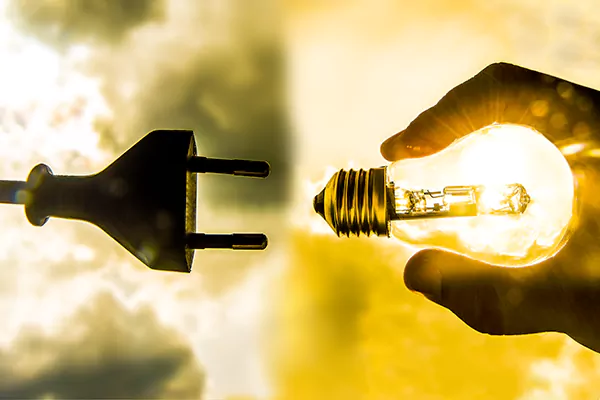
Now let’s correlate the definition with our example above. The input power is the energy that comes into your electric bulb from the main supply. So what the LED driver will give out is highly dependent on the input power with the unit in watts.
What Is Output Power?
Output power is the reverse of what we have seen in the previous section. So let’s reflect on this question, “what happens after the LED driver receives the energy (input power) from the electric line?” The best answer is that it supplies this power to the LED system.
Output power is the amount of energy delivered by a device, circuit, or system.
We can paint a better picture this way!! The LED driver receives energy from the main supply, regulates the power, then delivers it to the LED.
How To Calculate LED Driver Efficiency
Do you remember when we established the definition of LED driver efficiency in the first section of this piece? A formula accompanied the description, and that’s our way out to calculate the LED driver efficiency.
Recall;
LED Driver Efficiency = 
Before we proceed, please let’s remind ourselves of the following
- Input power is the amount of energy that gets into a device or system. In this case, the device or system is the LED driver
- Output power is the amount of energy delivered by a device, circuit, or system.
Use the following steps to calculate the LED driver efficiency.
- Determine the output power which the LED driver delivers to the LED. The output power is equal to the output current multiplied by the output voltage of the LED driver.
- Determine the energy that goes into the LED driver from the electric line.
- Compute the derived parameters into the formula above.
- Process the calculation and express your result in percent.
For example, you have an LED driver that receives 150 watts of power from the mains supply and then sends an output of 135 watts to the LED.
Using the model; LED Driver Efficiency = 
LED Driver Efficiency = ![]()
From our analysis above, it is clear that your LED driver has an efficiency of 90%.
Key Factors Affecting Efficiency
When we talk about efficiency, it will be an error not to consider its driving force. The efficiency of a LED driver hinges on the input voltage and load (output voltage).
Let’s take a look at the chart below;
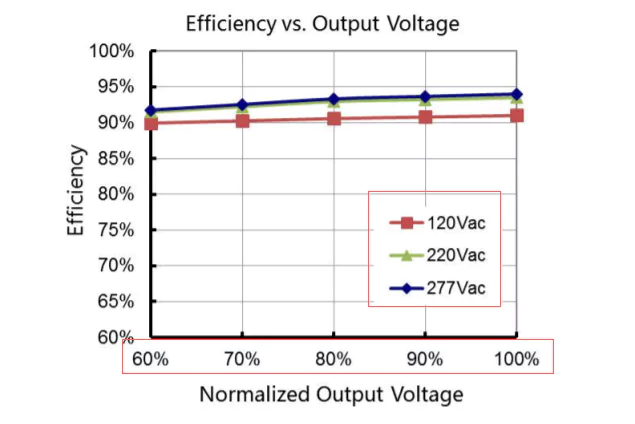
There are different power grids in the world. For example, we have 120 Vac and 277Vac for the North America and 220 Vac for most of other areas.
Looking at the chart, we can see that efficiency is different with both input voltage and output voltage which is also load in terms of a constant current LED driver.
Losses In Power Supply Efficiency
Energy losses occur in power supply; as a result, it’s impossible to have a 100% power supply. Yet, despite this reality, we can still achieve high efficiencies of up to 96%. How? With great component selection and exquisite design, this feat is achievable.
The energy loss occurs in resistors, capacitors, inductors, diode conjunction, and (MOSFET)
Active and passive component losses are the catalyst for energy loss in the power supply. So let’s check out what they entail.
Passive Component Loss
Passive components are those part of the device that does not need the extra control signal to operate, including diodes, transformers, capacitors, inductors, and resistors.
So passive component loss refers to energy loss occurring in those passive components.
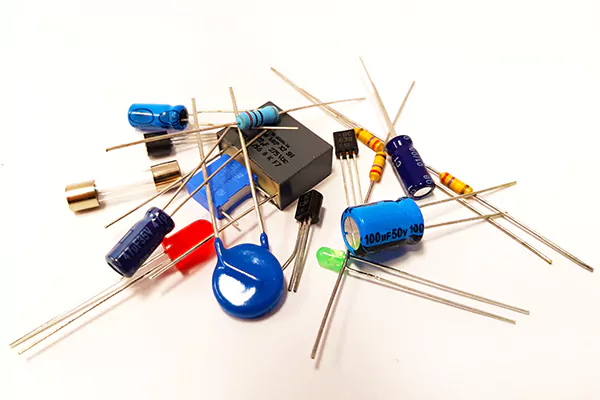
Active Component Loss
In contrast to the passive components, active components need power for their operation. Therefore, they can produce power gain and amplify signals. The active components include a transistor, integrated circuit, SCR, MOSFET, etc.
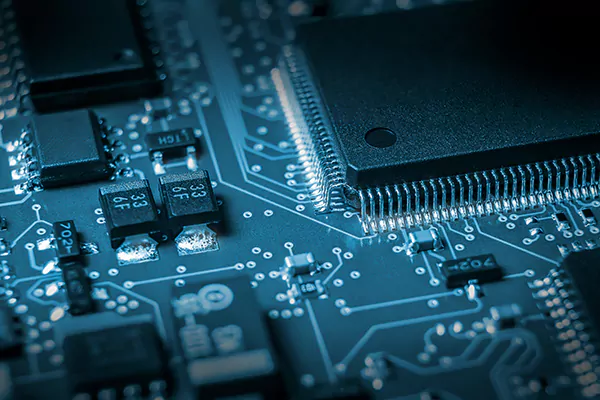
When we talk about active component loss, we refer to energy loss in part mentioned above of the device.
Other Loss
Due to the existence of parasitic resistance of the components like PCB, cable, there are power loss occurring on the path through which the current goes.
Why Use High-Efficiency Driver?
We have talked about crucial details on LED drivers, but you could be asking, is it worth it? Or why so much emphasis on high-efficiency drivers?
Not to worry, sit tight as we reveal the answers you seek.
Energy and Cost Saving
The first reason why you should use a high-efficiency driver is to save cost. Remember when the lighting will pull out significant money from your pocket due to high energy consumption. That’s why the whole industry turned towards LED lighting.

It’s an opportunity to take full advantage of cost savings with high-efficiency drivers. They require lesser energy input to provide the needed luminous output. Hence results in a low cost of power. Utility bills become low!!
Increased Product Lifespan
It’s valid that the power supply dissipates heat. However, the dissipated heat harms the lighting system and reduces its lifespan.
The higher the driver’s efficiency, the lesser the heat it dissipates, and the longer the system’s life.
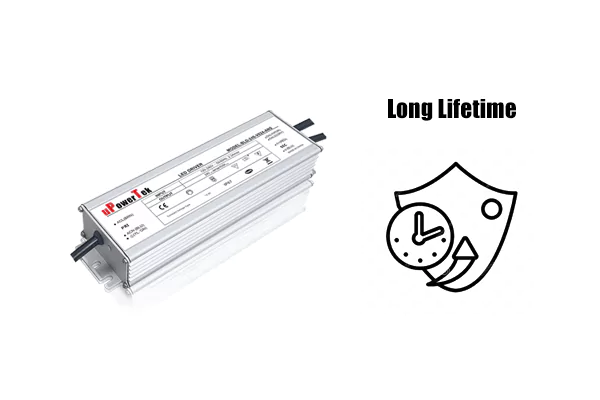
High Efficiency LED Driver
uPowerTek makes it all easy; you can get top-quality LED drivers with an outstanding 96% efficiency. With up-to-date technology and practice, uPowerTek provides the following.
-
 120-277Vac Input LED Driver1515 products
120-277Vac Input LED Driver1515 products -
 180-528Vac Input LED Driver1111 products
180-528Vac Input LED Driver1111 products -
 Constant Current LED Driver2929 products
Constant Current LED Driver2929 products -
 Constant Voltage LED Driver1313 products
Constant Voltage LED Driver1313 products
It’s been a worthwhile journey, you are enlightened and all triggered up. I trust you to make a great choice!!

